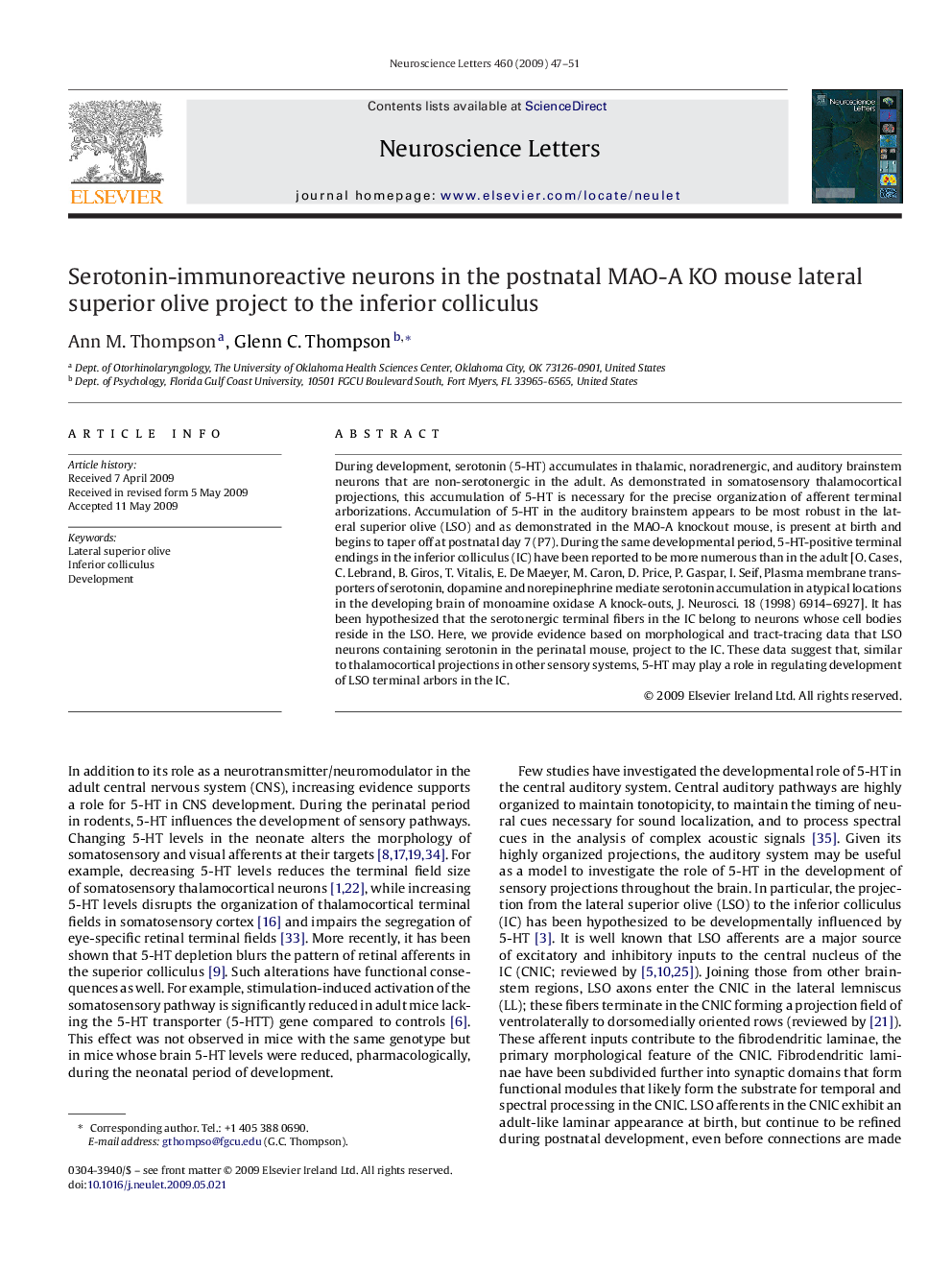| Article ID | Journal | Published Year | Pages | File Type |
|---|---|---|---|---|
| 4347081 | Neuroscience Letters | 2009 | 5 Pages |
During development, serotonin (5-HT) accumulates in thalamic, noradrenergic, and auditory brainstem neurons that are non-serotonergic in the adult. As demonstrated in somatosensory thalamocortical projections, this accumulation of 5-HT is necessary for the precise organization of afferent terminal arborizations. Accumulation of 5-HT in the auditory brainstem appears to be most robust in the lateral superior olive (LSO) and as demonstrated in the MAO-A knockout mouse, is present at birth and begins to taper off at postnatal day 7 (P7). During the same developmental period, 5-HT-positive terminal endings in the inferior colliculus (IC) have been reported to be more numerous than in the adult [O. Cases, C. Lebrand, B. Giros, T. Vitalis, E. De Maeyer, M. Caron, D. Price, P. Gaspar, I. Seif, Plasma membrane transporters of serotonin, dopamine and norepinephrine mediate serotonin accumulation in atypical locations in the developing brain of monoamine oxidase A knock-outs, J. Neurosci. 18 (1998) 6914–6927]. It has been hypothesized that the serotonergic terminal fibers in the IC belong to neurons whose cell bodies reside in the LSO. Here, we provide evidence based on morphological and tract-tracing data that LSO neurons containing serotonin in the perinatal mouse, project to the IC. These data suggest that, similar to thalamocortical projections in other sensory systems, 5-HT may play a role in regulating development of LSO terminal arbors in the IC.
